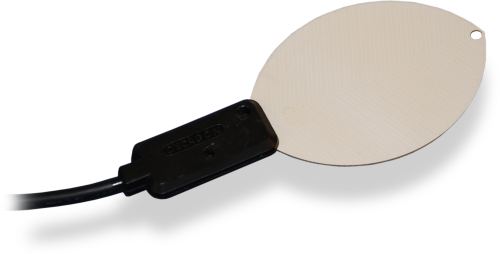
Kompatibel mit fast allen Datenloggern von Campbell Scientific






Überblick
Der LWS ist ein Blattnässesensor der kleinste Mengen von Wasser oder Eis auf der Sensoroberfläche erkennen kann. Er ist zum Anbau am Mast einer Wetterstation oder im Pflanzenbestand geeignet. Alle unsere Datenlogger können diesen Sensor messen.
Lesen Sie mehrFunktionen und Vorteile
- Imitates characteristics of a leaf
- Does not require painting or calibration of individual sensors
- Detects trace amounts of water or ice on the leaf surface
Bilder

Technische Beschreibung
The LWS measures the dielectric constant of the sensor’s upper surface. This method allows the sensor to detect the presence of water or ice anywhere on the sensor’s surface.
Kompatibel mit
Please note: The following shows notable compatibility information. It is not a comprehensive list of all compatible products.
Datenlogger
| Product | Compatible | Note |
|---|---|---|
| CR1000 (retired) | ||
| CR1000X (retired) | ||
| CR300 (retired) | ||
| CR3000 | ||
| CR310 | ||
| CR350 | ||
| CR6 | ||
| CR800 (retired) | ||
| CR850 (retired) |
Additional Compatibility Information
Installation
The LWS is designed to be deployed either in the canopy or on a weather station mast. Two holes in the non-sensing portion of the sensor body are provided for attaching the sensor to a pole or branch via twist ties or with 4-40 bolts.
Spezifikationen
| Measurement Description | Dry, frosted, wet |
| Signal Type/Output | Analog voltage |
| Measurement Time | 10 ms |
| Power | 2.5 Vdc @ 2 mA to 5 Vdc @ 7 mA |
| Output | 250 to 1500 mV (millivolt reading relates to moisture state) |
| Operating Temperature Range | -40° to +60°C |
| Life Expectancy | 2+ years (continuous use) |
| Painting | Does not require painting. |
| Dimensions | 12.0 x 5.8 x 0.8 cm (4.7 x 2.3 x 0.3 in.) |
| Weight | 0.14 kg (5 oz) with 4.57 m (15 ft) cable |
Dokumente
Broschüren Produkte
Handbücher
Übereinstimmung mit Richtlinien u. Vorschriften
FAQs für
Number of FAQs related to LWS: 5
Alle anzeigenWenige anzeigen
-
- The ability of the LWS to detect water on its surface is not limited by the size of the water droplets, as it can be with a 237-L.
- The LWS is ready to install for most applications, whereas the 237-L requires further preparation before installation.
- The LWS can detect the presence of ice and differentiate ice from water. In contrast, when ice forms on the 237-L, the sensor’s output is no different from that of a dry sensor.
-
Both leaf wetness sensors are compatible with all Campbell Scientific data loggers. However, the 237-L is often used in large legacy networks that rely on the 237-L for data continuity. The 237-L does require painting and field calibration, whereas the LWS does not.
-
To incorporate a sensor that is compatible with wireless sensor interfaces into a wireless network, a CWS900-series wireless sensor interface is needed, as well as an A205 CWS-to-PC interface to configure it.
Anwendungsbeispiele
Overview In May 2019, the Government of Zambia embarked on the Climate Adaptation Water and Energy......lesen Sie mehr
The cultivation and export of roses and other flowers is a huge business in Colombia.......lesen Sie mehr

